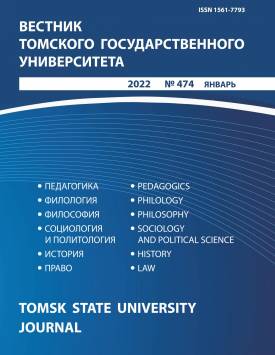Japanese assimilation policy in colonial Korea in 1910-1945 on the example of educational reforms
The aim of this study is to analyze the transformation of Japan's assimilation policy in occupied Korea in the period from 1910 to 1945 on the example of educational reforms. This topic is considered in studies of numerous researchers, Russian ones include works of D.A. Yakimova, T.F. Tertitsky, V.A. Gaikin, et al. Among foreign authors, the most famous researcher who deals with the issues of the colonial heritage of Korea is Mark E. Caprio. The article deals with the choice of the assimilation policy in the educational sphere, highlights the main directions and stages of its implementation. Japan was faced with a choice between the French and British style of conducting a colonial policy. These two styles differ in their attitude to subordinate territories. The British style of government involves intervention in the management of the colony only at the highest level; the French style involves the “equalization” of the colonies with the mother country. The choice of Japan fell on the French style of management, due to the common cultural heritage. The entire period of the occupation of Korea is conditionally divided into three periods, in accordance with the colonial policy pursued by the Governor-General at the direction of the mother country. Each of the three periods had its own management features, which can be clearly traced in the educational sphere. The first period was quite tough, it practically created the education system. A school system was created in accordance with the Japanese one, which assumed the study of Japanese as the state language, and the system itself was aimed at creating subjects of the emperor. The second period is characterized by its liberality in the ongoing educational reforms. The first university was founded, and the study of the Korean language and Korean culture was allowed. The third period can be called the most radical. During this period, the Japanese government made an attempt to completely replace Korean culture with Japanese, again it was forbidden to study the Korean language, the day of schoolchildren began with the recitation of the oath to the Emperor of Japan, and Korean names were to be replaced with Japanese. As a result, we can distinguish several main points. Firstly, the Japanese government quite successfully chose the option of assimilation colonization, a kind of incorporation of Korean culture into Japanese culture and further carrying out a course to replace it, given their common roots and similar cultural basis, which allowed a safe combination of the two cultures. Secondly, the policy of assimilation could have had more successful results if the colonial government had not sought to completely destroy ethnicity, but to preserve and multiply it through the fusion of Japanese and Korean cultures. Thirdly, the reform of the education system in accordance with modern standards made it possible to increase the level of literacy of the population.
Keywords
Japanese aggression, Korea, colonial policy of Japan, assimilation, educational reformsAuthors
| Name | Organization | |
| Nazdryukhina Elizaveta V. | National Research Tomsk State University | nazelizaveta@bk.ru |
References

Japanese assimilation policy in colonial Korea in 1910-1945 on the example of educational reforms | Vestnik Tomskogo gosudarstvennogo universiteta – Tomsk State University Journal. 2022. № 474. DOI: 10.17223/15617793/474/22
